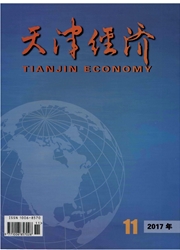

 中文摘要:
中文摘要:
目的研究巨噬细胞经典模式极化(M1极化)和替代模式极化(M2极化)过程中,细胞内活性氧(ROS)的变化。方法体外培养小鼠巨噬细胞RAW264.7细胞,分别用干扰素-γ(IFN-γ)和白细胞介素4(IL-4)诱导细胞向M1极化和M2极化。采用直接免疫荧光标记和流式细胞术分析CD86、CD16/32和CD206表达,流式细胞术检测细胞内ROS。结果 IFN-γ诱导RAW264.7细胞M1极化,对照组细胞CD86、CD16/32和CD32阳性细胞百分率分别为(56.4±4.1)%、(96.2±2.0)%和(19.4±4.3)%,而50μg/L IFN-γ诱导12 h后,3种分子的百分率分别为(67.4±5.2)%、(95.9±3.5)%和(9.7±2.0)%;IL-4诱导RAW264.7细胞M2极化,25μg/L IL-4诱导12 h后,3种分子的百分率分别为(39.1±4.4)%、(95.9±3.3)%和(23.8±4.6)%。对照组、IFN-γ(50μg/L)和IL-4(25μg/L)诱导组细胞ROS相对含量分别为(34.5±4.0)%、(66.2±5.8)%和(44.9±5.5)%。结论极化是巨噬细胞活化和功能转变的过程,伴随其M1和M2极化,细胞内ROS均增加。
 英文摘要:
英文摘要:
Objective To study the change of intracellular reactive oxygen species( ROS) during the classical activation macrophages( M1 type) and alternative activation polarization( M2 type). Methods Mice macrophage RAW264. 7 cells were cultured in vitro and induced by IFN-γ and IL-4 to M1 and M2. CD86,CD16 /32 and CD206 expression were detected by direct immunofluorescence flow cytometry( FCM),while ROS was measured with FCM. Results IFN-γ induced RAW264. 7 cells to M1 polarization and the percentage of CD86,CD16 /32 and CD32 positive cells in control group were( 56. 40 ± 4. 10) %,( 96. 16 ± 2. 04) % and( 19. 36 ± 4. 33) %,and after induction with 50 μg /L of IFN-γ for 12 h,the positive percentage of the three molecules were( 67. 41 ± 5. 22) %,( 95. 87 ± 3. 49) % and( 9. 69 ± 2. 02) %. While IL-4 induced RAW264. 7 cells to M2 polarization,and induced with 25 μg /L of IL-4 for12 h,the positive percentage of the three molecules were( 39. 14 ± 4. 39) %,( 95. 93 ± 3. 27) % and( 23. 80 ±4. 57) %. The relative amount of ROS in the control group,IFN-γ group and IL-4 group were( 34. 47 ± 4. 03) %,( 66. 20 ± 5. 77) % and( 44. 90 ± 5. 53) %. Conclusion Polarization is a process of macrophage activation and function transformation,while intracellular ROS are increased accompanied by the M1 and M2 polarization.
 同期刊论文项目
同期刊论文项目
 同项目期刊论文
同项目期刊论文
 期刊信息
期刊信息
